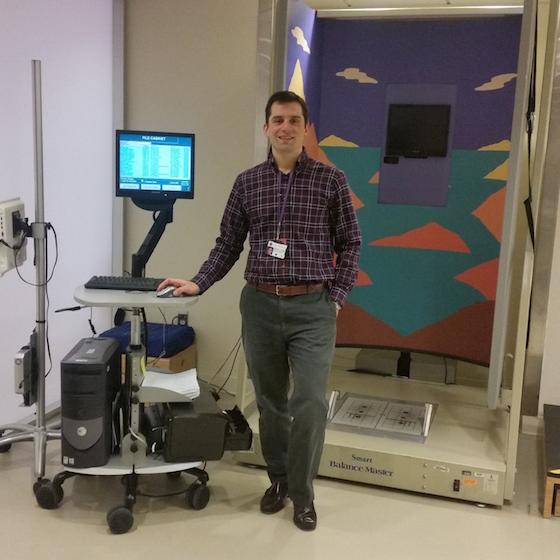Changing the Way Concussions Are Treated
Touro SHS Grad Publishes Innovative Studies on Concussion Treatment

The groundbreaking work of a Touro’s School of Health Sciences (SHS) graduate might change the longstanding treatment of concussions.
In his capacity as a physical therapist at NYU’s Rusk Institute of Rehabilitation, Touro SHS Doctor of Physical Therapy Program graduate Joseph Adams treated patients suffering from the after-effects of concussions such as headaches and dizziness.
“So many patients with concussions would come in seeking treatment,” recalled Adams. “Because they would either have been told that nothing could be done or they should be on cognitive rest indefinitely.”
The standard treatment for concussions is cognitive rest and most concussions are typically cured within several weeks. But, on occasion, some symptoms continue for several years. When patients with longstanding concussion injuries arrived at Rusk, Adams and his colleagues treated them with vestibular rehabilitation and aerobic exercises along with other standard physical therapy interventions.
“Our intervention involved active rehabilitation in a population that hadn’t been active for a long time,” said Adams.
Noticing the positive results, Adams decided to search the literature for other treatments that might be effective for patients who were still grappling with the symptoms of concussions. Adams was surprised by what he found. While there was a multitude of studies about the causes of concussions, few addressed ways to treat it, aside from cognitive rest.
“That spurred us on to create an intervention and formally study this population,” Adams explained.
Together with his colleagues, Adams began studying the effects of vestibular rehabilitation on patients with concussions. For his first study, he recruited 14 patients who had concussions more than a year ago, yet still suffered symptoms like dizziness. Many were still on disability and unable to return to work full-time.
“We sought a population that thought they couldn’t improve anymore after such a long time,” he said. “This is a population that society has given up on.”
Through the use of vestibular rehabilitation, 92 percent of the patients were able to return to work along with reporting a slight decrease in symptoms.
“Typically, there’s a belief that a year after you’ve had a concussion, if you’re still feeling symptoms, you’re not going to improve,” Adams explained. “What this study adds to the literature is that even if people wait a long time there is still potential to improve.”
Their findings were published in Physiotherapy in Canada this month.
Adams and his colleagues also studied the effects of physical rehabilitation as a treatment for patients who had experienced concussions more recently. While there was no control group in the study, the results bode well for the treatment.
“Our conclusion is that it’s feasible that this intervention can be performed easily in the clinic and it could help those suffering from persistent dizziness after a concussion,” stated Adams.
The second study was published in the December issue of the Journal of Allied Health.

